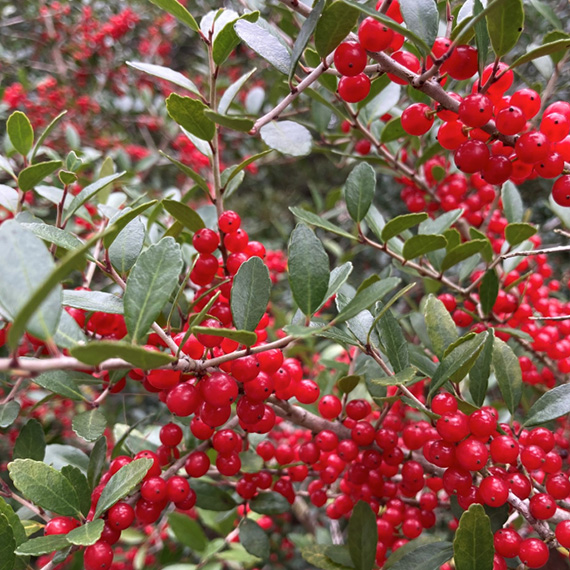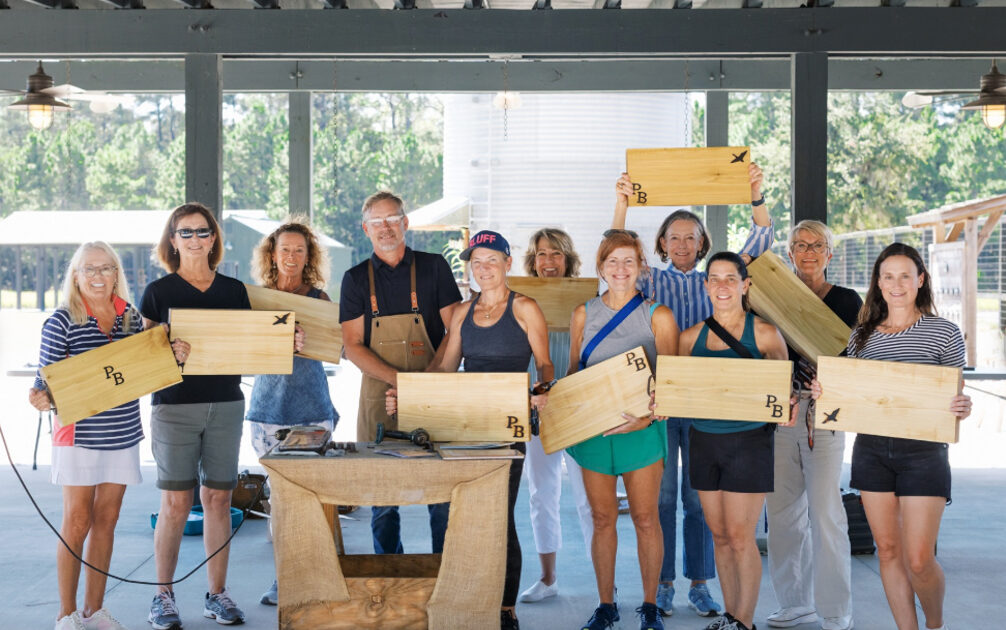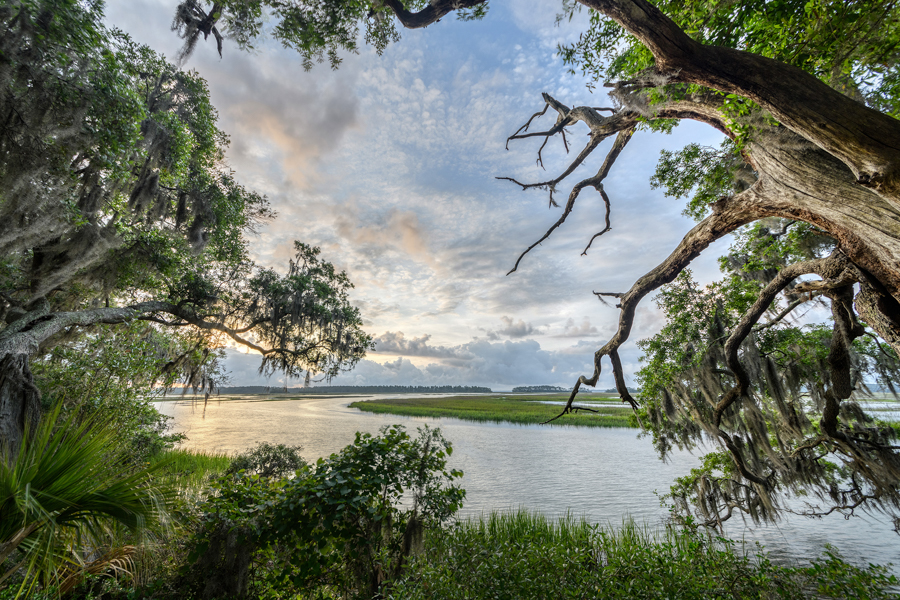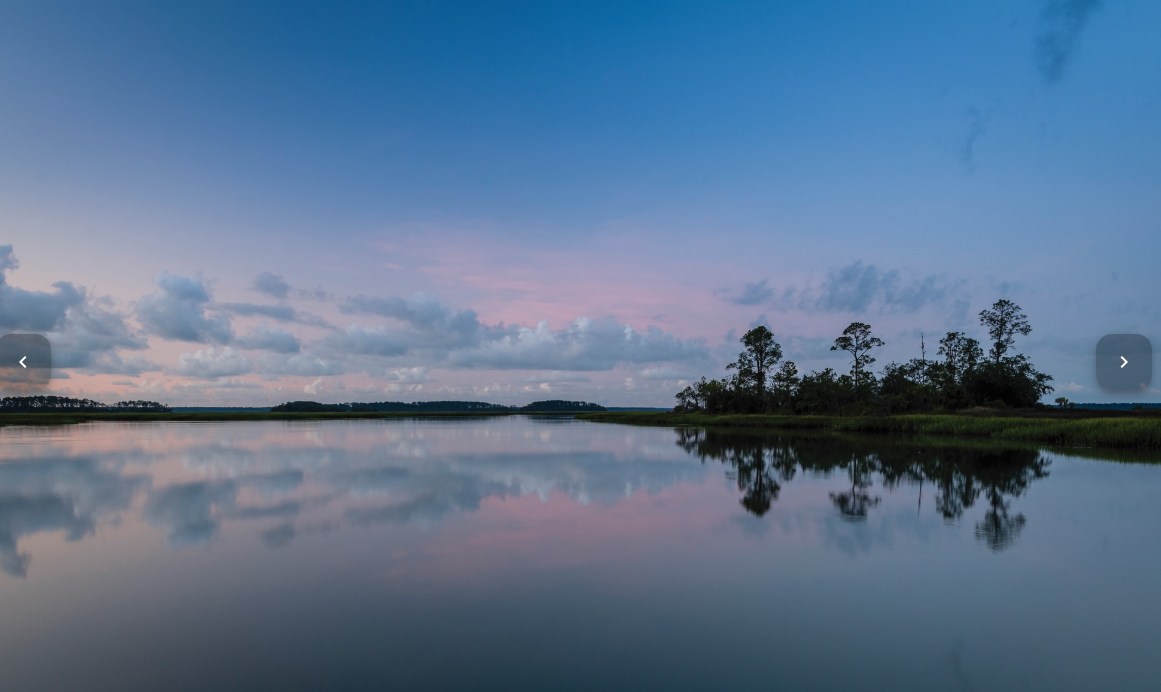Palmetto Bluff Real Estate Company Sales Office
Office Hours
Monday-Friday 9am - 5pm
Saturday 9am - 4pm
Sunday 12 - 4pm
Saturday 9am - 4pm
Sunday 12 - 4pm
The marshes surrounding Palmetto Bluff fill and spill with water from the ocean on a never-ending 12-hour loop. Local fauna, going about their daily lives, are deeply connected to the rise and fall of the tide. Their footprints tell the story. White-tail deer cling to its edges for safe, easy travel. Raccoons frequent the marsh looking for their prey which consists of crustaceans and snails that also leave their endless and aimless ribbons of tracks behind. The wild pig is also a visitor to the marsh at low tide feeding on snails and whatever else they can find. The coyote and bobcats visit the marsh at low tide to hunt for their prey which consists of small rodents, piglets, and in some cases, smaller furbearers such as the raccoon. As the tide slowly but surely starts to come in, wading bird tracks can be found. These stealthy, motionless birds stand with necks cocked back, ready to strike unsuspecting fish and crustaceans that come in with the rising tide. The marsh is harsh yet plentiful. It is a network of never-ending edges and subtleties that call to local critters and the fortunate humans that live along the seams.

One factor that helps distinguish a canine track from a feline is the symmetrical toes and the X-shape that is formed between the toes and foot pad.


Pigs commonly travel through the marsh and their tracks are more oval-shaped than a deer track which is more pointed and looks similar to a heart.

The large, slender-toed bird feet belong to a species of wading bird whereas the smaller bird feet are from some species of shorebird. The more human-like tracks are from a raccoon searching for some food.

Raccoons can be seen out in the marsh day and night as they will follow the tides and forage during low tide.

You would imagine an animal needs to have feet for leaving behind tracks, but these winding paths are the telling sign of snail activity!

Wading birds move through the marsh in search of crabs, shrimp, small fish, and maybe even a rodent in the case of great blue herons!

Warm, fragrant, and deeply comforting, Chef Beth’s Southern Sausage & Sage Stuffing is a holiday classic that brings together rich pork sausage, fresh herbs, and toasted bread for the ultimate savory side dish. Studded with green apples and aromatic vegeta...

As December settles over Palmetto Bluff, it brings softer light, cooler mornings, and the natural beauty of native evergreens and winter berries that define the Lowcountry landscape. Palmetto Bluff Conservancy’s Education and Outreach Manager, Aaron Palmier...

In 2025, Palmetto Bluff welcomed new neighbors and old friends, groundbreakings, and long-awaited openings. From inspired Club gatherings and elevated programming to the creation of our latest golf course, the year was defined by connection and excitement for ...

There is something serene about waking up to shimmering water, the stillness of the woods, or the sweep of marsh and sky right outside your window. Even without stepping outside, science shows that simply seeing nature from home can meaningfully improve mental...

The Ultimate Choice: Building vs Buying a Home in Palmetto Bluff For those searching for Palmetto Bluff homes for sale, this common question often arises: Should you choose an existing residence, or embrace the opportunity to build your own? While a complet...

A Complete Guide to South Carolina Winter at Palmetto Bluff South Carolina's winter is unlike any other on the East Coast. While many travelers search for “South Carolina winter” expecting cooler temperatures and limited outdoor options, the Lowcountry revea...

River Road: Where Lowcountry Beauty Meets Elevated Everyday Living Tucked gracefully between Wilson Village and Moreland Village, River Road is one of Palmetto Bluff’s most immersive communities. It's where the pace of life seems to soften, classic Southern ...

Sunday, December 14 | 9am to 1pmVillage GreenThe season’s most festive farmers market, the Holiday Farmers Market, comes to Wilson Village on Sunday, December 14, from 9am to 1pm. All are welcome to visit and experience the magic of holidays at the Bluff. The ...

Tucked amid whispering pines and overlooking a tranquil water trail, 11 Lyonia Street is where Lowcountry charm meets modern artistry. The newly built residence redefines Southern living with a balance of craftsmanship and calm. This is a home that feels both ...

The holiday season in the Lowcountry brings crisp air, oaks draped in twinkling lights, and laughter drifting from homes where families and friends gather once again. At Palmetto Bluff, the holidays are more than just a season; they’re a feeling of togethernes...
Learn about the Palmetto Bluff Conservancy and how we keep the vision of our land in place.
On land or water, there is an ever-evolving variety of activities.
We do not attempt to independently verify the currency, completeness, accuracy or authenticity of the data contained herein. All area measurements and calculations are approximate and should be independently verified. Data may be subject to transcription and transmission errors. Accordingly, the data is provided on an “as is” “as available” basis only and may not reflect all real estate activity in the market”. © [2023] REsides, Inc. All rights reserved. Certain information contained herein is derived from information, which is the licensed property of, and copyrighted by, REsides, Inc.